South Korea
An example 3.5 weeks itinerary
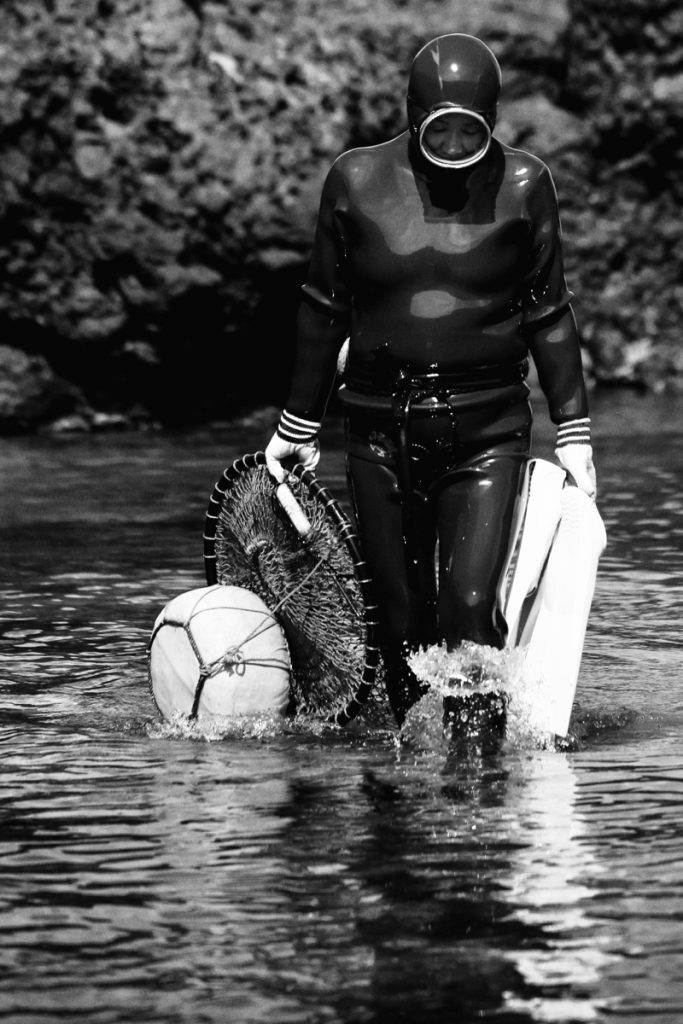
South Korea
A flight ticket to South Korea is comparable in price to other countries in Asia. For the best prices you can check out http://skyscanner.com . You can also enable a notification on this site. It is also sometimes worthwhile to check with the national airline company itself. We booked our direct flight with Korean air. You can arrange your accomodations yourself via https://www.booking.com of http://airbnb.com
South Korea is not very well known to most tourists in Asia. Traveling around is a bit more expensive than in the other Asian countries, but you can still make it as expensive as you want. Hotels and public transport, for example, are much cheaper than in the Netherlands, but for luxury products you pay much more. South Korea has a lot to offer, from the impressive history between North and South, beautiful nature, culture, temples and very friendly people. Korean cuisine is also very popular. Look for gluten-free tips https://captureplaces.com/glutenvrij-zuid-korea/
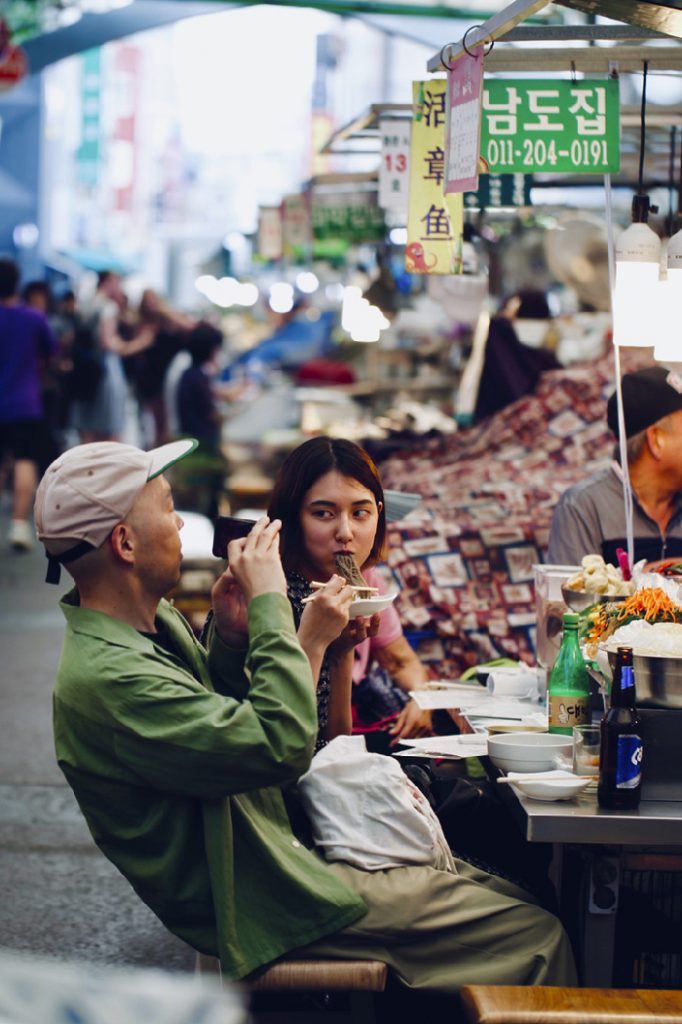
- Buy a SIM card at the airport and a Tmoney card for public transport.
- Download google translate and the app Naver (Google maps not always right)
Sample route South Korea of 3.5 weeks

Amsterdam-Seoul
A direct flight from Amsterdam to Incheon airport in Seoul takes about 10.5 hours and there is a time difference of 7 hours. Buy a SIM card with unlimited internet for 30 days at the airport for € 54 for one phone (in July 2019). Internet is very useful to find your way to your hotel or place of interest, because not many people speak English and many signs are in Korean. At the airport you can also withdraw Korean money and buy a T-money card at a shop.
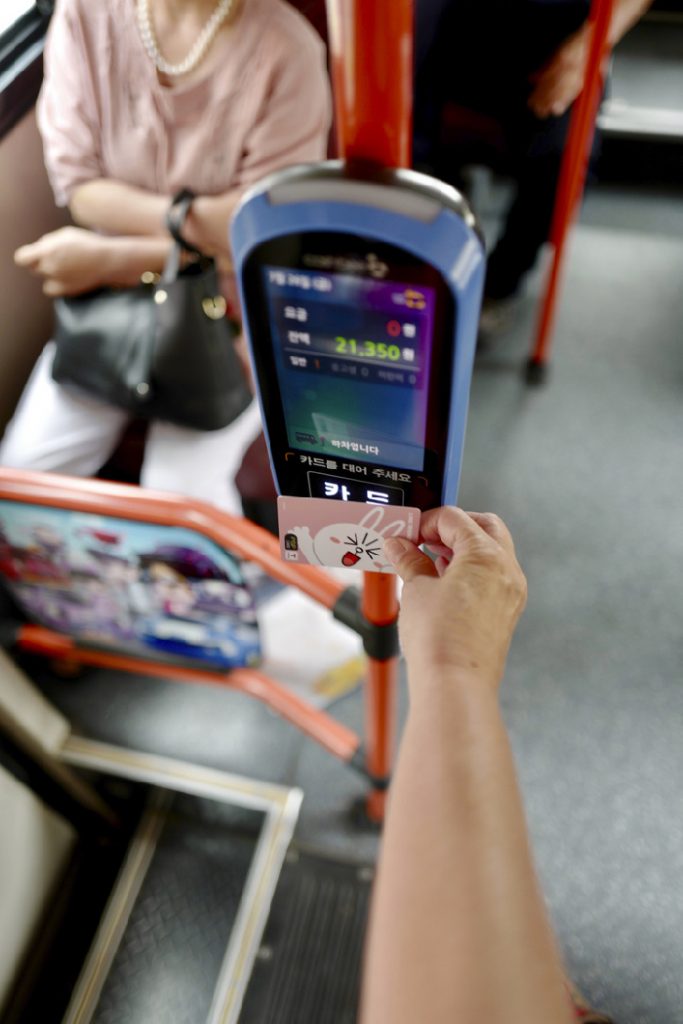
This is a kind of public transport chip card from Korea. This card costs
€ 3.03 once and you can charge on the spot. You have to use cash money in a store. There is also a vending machine at every station where you can recharge. From the airport, take the airport metro to your hotel or airbnb in Seoul. We regularly take an airbnb, because you can cook yourself. This is useful if you travel with someone who has celiac disease. https://captureplaces.com/glutenvrij-zuid-korea

Day 2: Excursion from Seoul to DMZ and JSA
Korea was in Japanese hands from 1910 to 1945. After World War II in 1945, the Soviet Union and the United States decided to divide Korea into 2 parts, due to strategic importance. The two Koreas each took a completely different course. North Korea was decorated communistly, defined by the powerful Soviet Union, and South Korea was decorated according to the western model of the United States. After 5 years of tensions, the bloody Korean War ended, killing as many as three million people. In 1953 it ended in a truce without a peace treaty. This is still in effect. There are still tensions between the two countries today.
You can book a tour to the JSA and DMZ via https://www.getyourguide.com/discovery/korean-demilitarized-zone-l89058/?utm_force=0 This lasts all day. You can also only visit the DMZ, but then you will not reach the border and the buildings where the presidents of North and South Korea and President Trump met. You must be lucky though. This tour is regularly canceled due to tensions between the two countries.
The DMZ (demilitarized zone) is a strip between the border of North and South Korea that is 4 km wide and 250 km long. The JSA (joint security area) is part of the DMZ, where the Koreans face each other face to face on the border. Diplomatic negotiations are being conducted in the JSA. In the morning you visit the DMZ, with several stops.
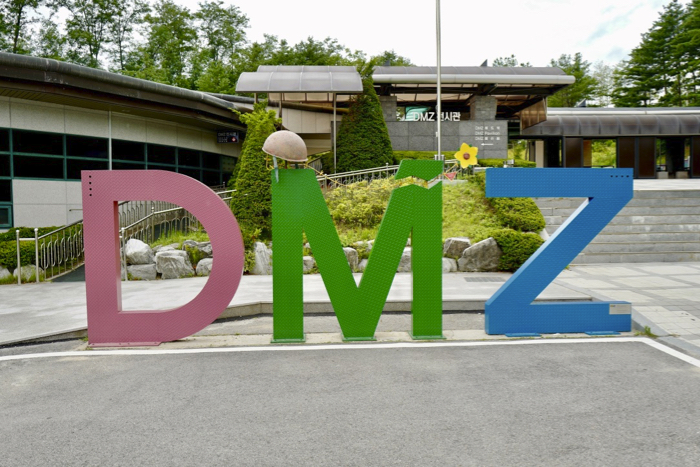
- The freedom bridge is a bridge built to repurchase the prisoners of war, as mines were located throughout the area. Now it is mainly a memorial place, where many colored ribbons are hung with Korean texts.
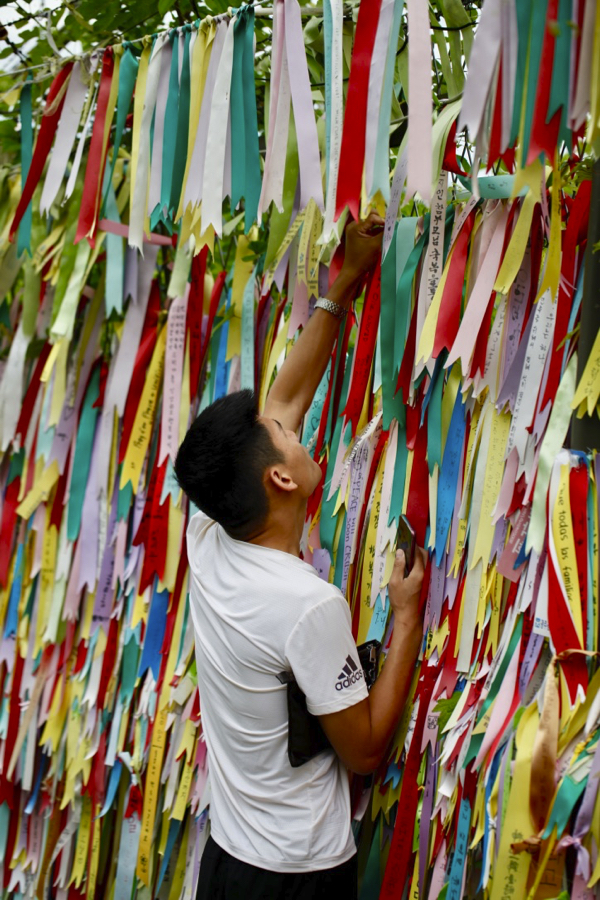
- At the observatory you have a view of North Korea from South Korea. There are free binoculars here, where you can see a propaganda village with an immense North Korean flag on it and an abandoned industrial city.

- The Dorasan station is a modern train station in South Korea built because of many donations from Koreans and is meant to be used sometime, but it has never been connected to North Korea’s train network. You can buy a ticket from Dorasan to Pyong Yang (not really of course). You can stamp this ticket yourself and you can look on the platform. The station building also contains all kinds of photos of the meeting of the North Korean and South Korean president in 2018.
- Over the years, 4 tunnels in the DMZ have been discovered by North Korea. You can visit the 3rd tunnel. You will see a film about it beforehand.
- For lunch there is bibimbap. They are Bowls of steamed vegetables. You take rice with it and you can choose from a few other dishes such as Kimchi (fermented cabbage), omelette, pieces of nori, etc.
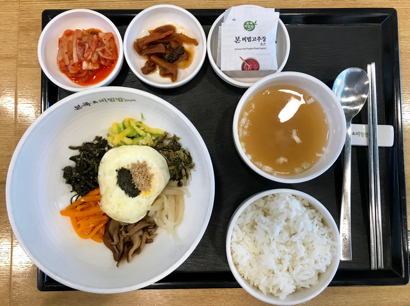
After lunch, the bus goes to the JSA. An American soldier checks the passports and guides the group further through the area fenced with fences and barbed wire. You are warned not to take photos everywhere, use bad language or hand gestures and dress smartly. After a short film you walk with the group to the conference room. This is a blue building in colors of the United Nations. The table in the middle is the border between the 2 countries, so you are in the back of the building in North Korea. Outside you can see a concrete ledge where the border runs. President Trump and his North Korean colleague Kim Jong-un have stood by that edge.

You will also visit the blue bridge and the peace tree. The bus then drives back to Seoul past an amethyst factory, where you can buy jewelry with the beautiful purple stones.
Day 3: Seoul
Don’t go on an intensive tour like we did the day after arrival. You better acclimatize for a day and see some things in Seoul. You have to get used to the time difference and the temperature.
According to the lonely planet, Bukchon Hanok village is a highlight. Here you will find all kinds of streets with traditional Hanok houses, where you can wander at your leisure.

To get there you can use public transport. However, many signs are in Korean. Fortunately, everyone is fine to help. Via TripAdvisor you can find good restaurants for lunch. If there is a line outside it is very popular with the locals and therefore probably good. From the Hanok village you can easily walk to Changdeokgung palace. It is one of the four most beautiful palaces in Seoul and is a World Heritage Site. The ticket for the entrance costs KRW 3000 (€ 2.40). You can then walk all over the site and admire the buildings and gardens.

Many Koreans rent traditional clothing and walk around with it and take a lot of photos of themselves. They are of course also happy if other tourists then take pictures of it.

Day 4 en 5: Suwon
Suwon is a city 30 km south of Seoul. The train from Seoul station takes about 30 minutes. You can also visit this city as a day trip from Seoul. You can see the main sights in 1 day, but with a second day you have a little more time for that.
From the station you can take a taxi or a bus to your hotel or attraction. The landmark Suwon is known for is the Suwon Hwaseong fortress. An 18th century fortress. This is South Korea’s only walled city. You can walk on the beautiful fortress wall here. That is a walk of 2.7 km. From the southern gate you first start a good climb. Then you walk past some beautiful gates and viewpoints.
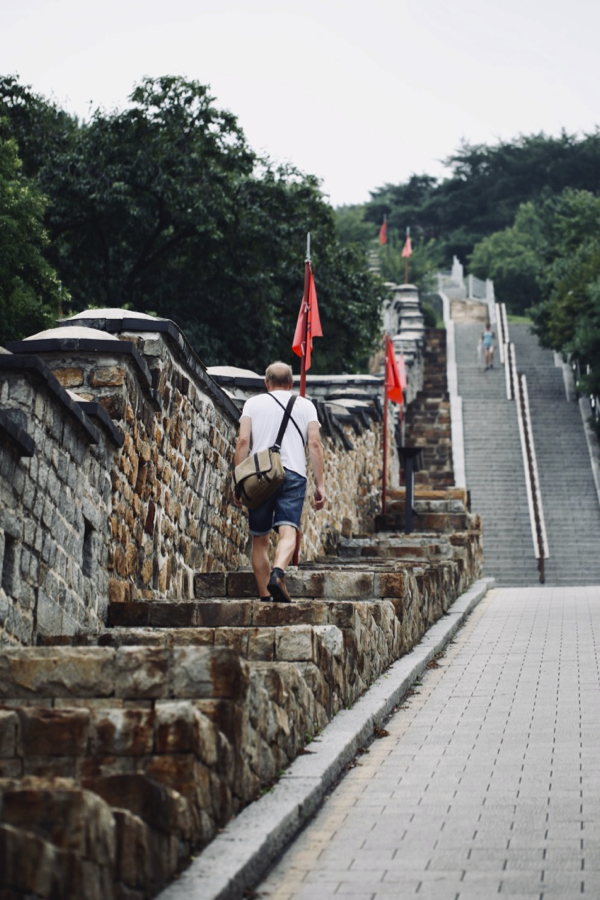
At the Hwaseong palace you can first take a tourist train. All information is in Korean, but you can orient yourself a bit on the environment and take a little wind with you, because it is quite warm in the summer. You can then visit the palace, but compared to the palace of Seoul that is a bit disappointing. When it is very hot you can cool off at the back of the train station and shop in the mall. At the train station you can immediately buy train tickets for the next day and reserve seats.

Day 5: Boryeong
Another highlight of South Korea is the mud festival in Boryeong, which always takes place in July. If you know when this festival takes place, you can already book a hotel, because this is a popular festival. We spent the night in the Nova hotel. A simple, but fine hotel with a view of the yellow sea. By train from Suwon you travel to Boreyong (Deachon) in 2 hours. The mud festival takes place along the beach. To get there you travel another 20 minutes by bus.
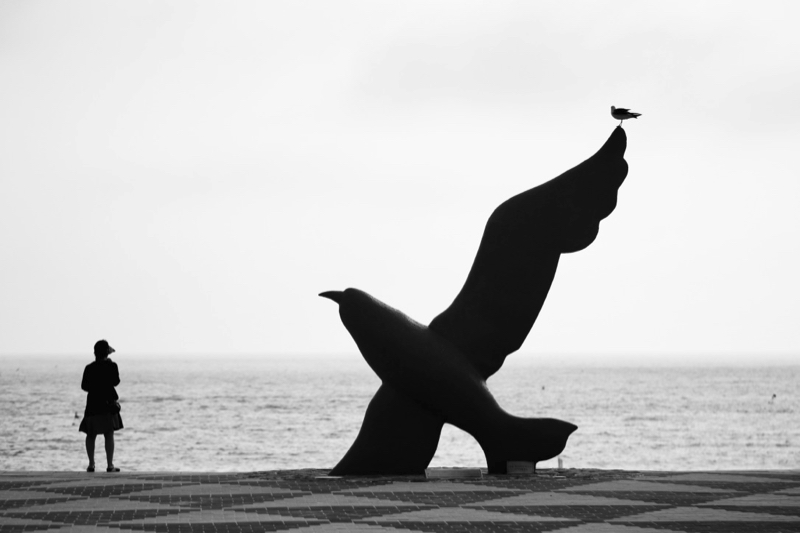
When you walk along the beach you don’t see many Europeans. The Koreans wear a swimsuit that covers the entire body. Many also wear a life jacket. There are life guards everywhere to see if you don’t go too far into the water. At the festival site, along the boulevard, there is a fenced area the size of a football field, in which you can do activities with mud. There is a wrestling place, an obstacle course, slides, etc. and there are performances. In the summer of 2019 you could enter KRW 12,000. You can also watch the event from the side. All around the place are all kinds of stalls for, for example, first aid, information, Mud passes for food and drinks, food stalls, mud cosmetics, etc.

In Boreyong you can walk along the entire boulevard. This is about 2.2 km long. There you will find the mud museum and many restaurants with Korean barbecue, but with shells, shrimps, meat and vegetables. Also in the evening, when the mud festival is closed, there are various performances on the plazas and on the beach.

Day 6 en 7: Jeonju
After 2 trains and 2 city buses you arrive in Jeonju Hanok village. This part of Jeonju city has 735 traditional wooden Hanok houses. While the rest of the city has been modernized, Hanok village has retained its historical charm and traditions. This town is also called slow city because the lifestyle of the people in this village is so relaxed. In this district you can stroll along all the streets and enjoy the charm. Our stay was in an authentic Hanok. You sleep in these houses on a mat on the floor. Jeonju is also the city where the bibimbap comes from.
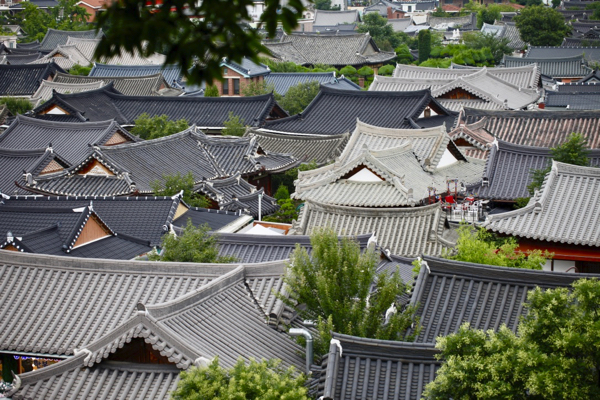
With a city bus you can visit the Deokjin park. This city park is surrounded by a lake full of Lotus flowers, which bloom in July and August. There are several places to enjoy the beautiful flowers and there is also a bridge over it.
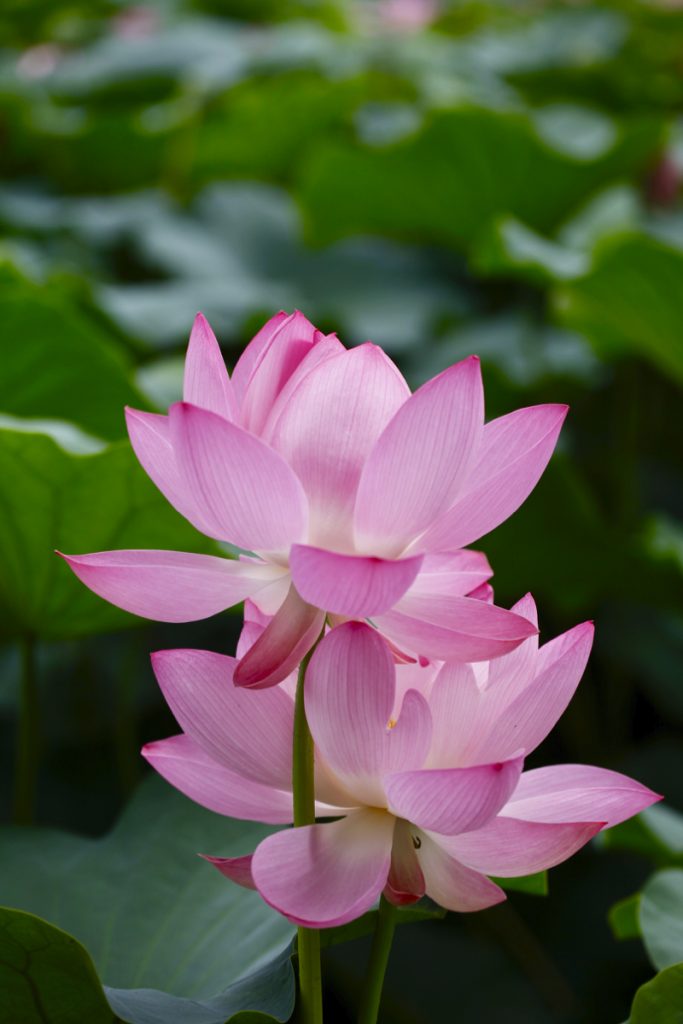

When you return to the Hanok village you can get off at the Jaman Mural village. This neighborhood is located on a hill near the Hanok village. When you walk up you walk past all kinds of houses full of murals with cheerful colors. In a cafe full of cartoon characters and bright colors you can even eat at the table with ET.

From this neighborhood you walk via a bridge over the main road to a temple on a hill called Omokdae. From that hill you have a beautiful view over the roofs of the old houses of the Hanok village. In the evening you can visit the night market.

Day 8 t/m 13: Seogwipo op Jeju-do
From Jeonju you can take an intercity bus to the airport in Gunsan from where you can take a domestic flight to the island of Jeju-do or Jeju island. This island is located south of South Korea and is mainly a tourist destination especially for the Koreans themselves.
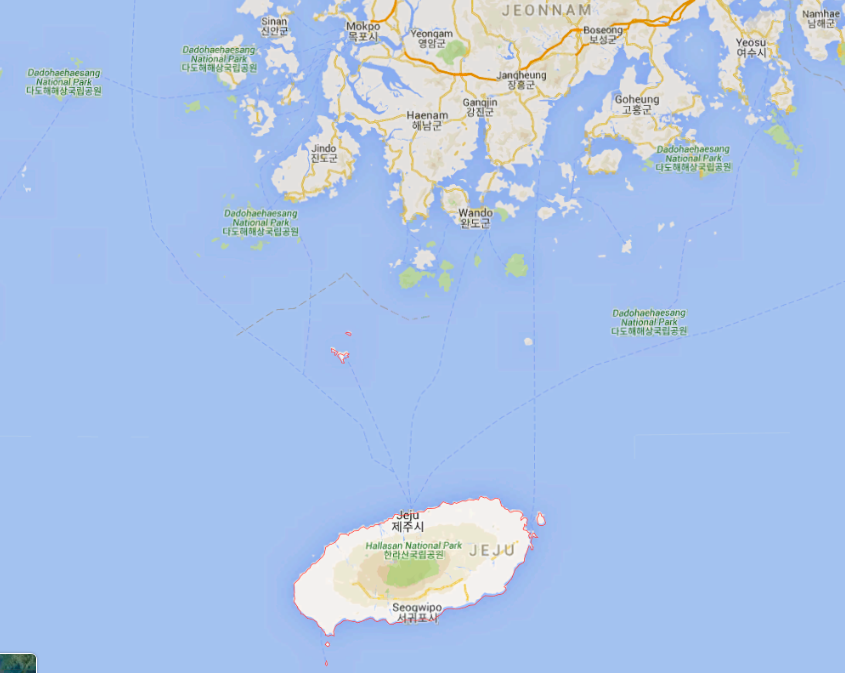
Buy tickets for this intercity bus in advance, as they don’t often go to the airport. A hotel employee will be happy to help you with that. Rent a car on the island in advance, because public transport on Jeju island is not convenient. In the Netherlands we had booked a flight and a car via http://Koreanair.com. We had also booked an airbnb in the south of the island near the city of Seogwipo. That’s about an hour from the airport. Jeff and Jo’s Airbnb was perfect. You have the house, which is fully equipped, all to yourself. Jeff and Jo are very helpful and enjoy talking to you. https://www.airbnb.nl/rooms/6631131?source_impression_id=p3_1585074660_4jVfSJ%2F0viCIuT%2FU

Seogwipo is the second largest city in Jeju island. In Seogwipo you will find Jeongbang Popko, a 23 meter high waterfall nearby with a view of the East China Sea. A beautiful and tourist spot.

Cooling down in the water of the waterfall is not allowed due to danger. The Koreans are very careful.
You can swim at the Oedolgae Rock further away. You do have to climb over hot lava rocks and stones to get to the water. Water shoes are then useful. There is also a small waterfall, under which you can rinse from the salty water of the East China Sea.

In the east of Jeju you can see the famous Haenyeo divers. These are often elderly women who dive for shellfish. They are usually in the sea for about 5 hours and can dive up to 20 meters deep and do not use oxygen bottles. You can probably see these women when you drive along the coast and then watch for orange buoys in the sea. You will probably see a stone house, with many mopeds outside.
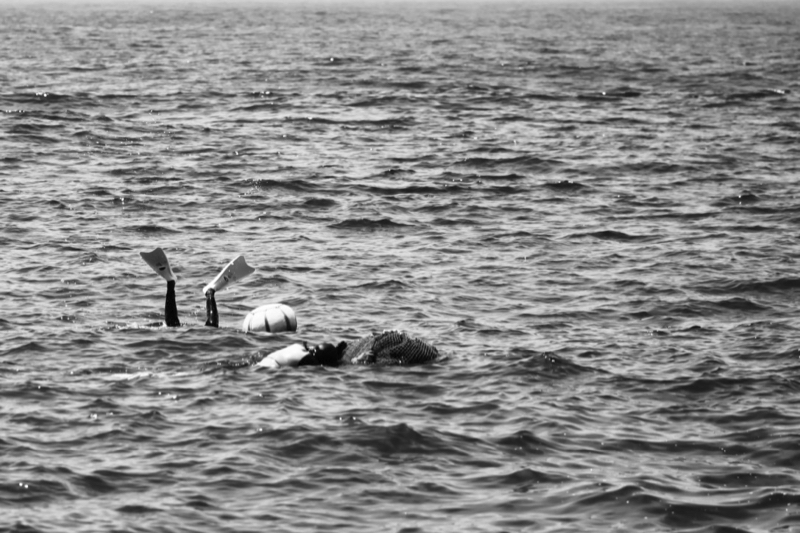
We saw these divers after a half hour drive from Seogwipo. We climbed over the black solidified lava along the sea to get closer. We also saw that they swam towards the coast, so back to the car and towards the spot where they climbed out of the sea. They loaded their shellfish nets onto a truck.
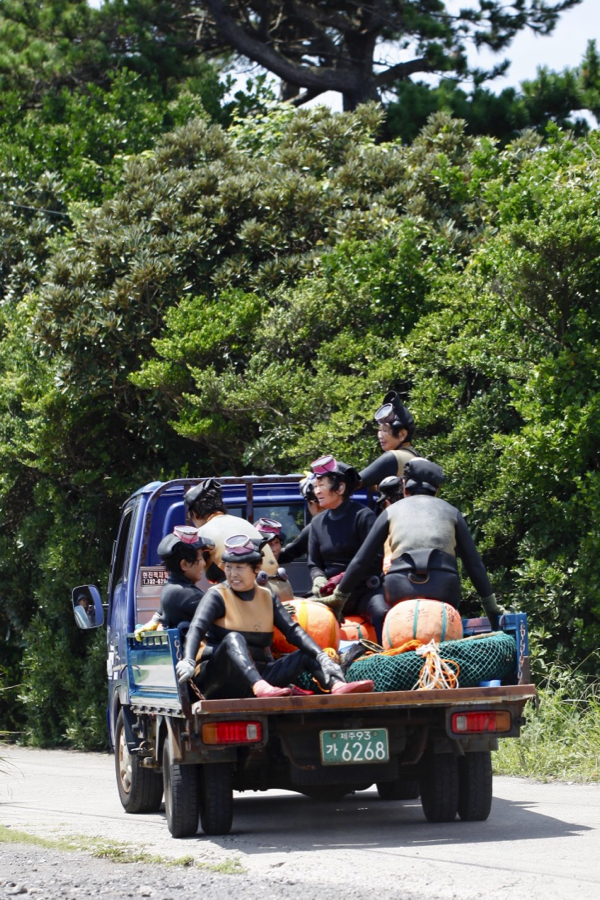
In the east of the island you will find the 2nd largest volcano of the island; the Seongsan llchul-bong. This volcano is 182 meters high and you can climb to the crater via stairs. There is no water in the crater because it consists of porous rock. The view is beautiful.
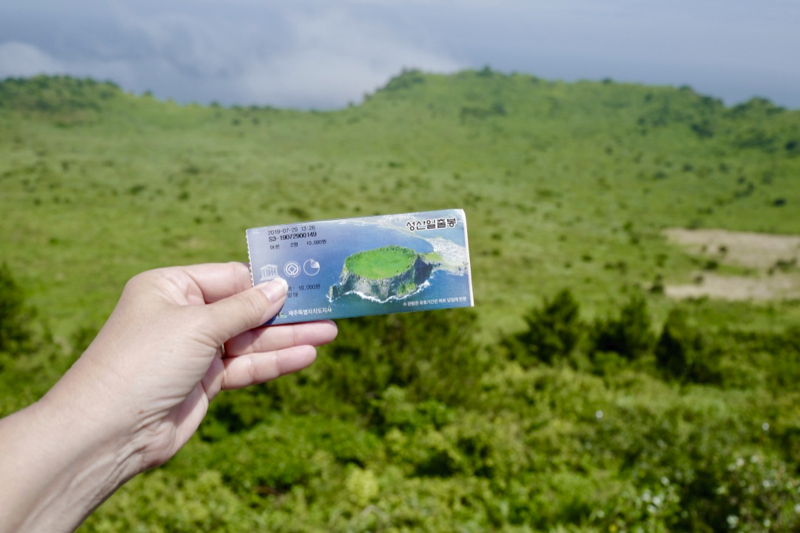
There are boats downstairs, where you can take a trip and there is a daily presentation of Haenyeo divers. You can also see them up close there, but especially for tourists. They clean their catch on the waterfront, which you can then immediately buy and consume.

Loveland is located near Jeju city. You will then drive through the Hallasan National park. This park is a nature reserve around the largest volcano in the middle of the island. At the visitors center you can find all kinds of walks, but walking to the crater is at least a hike of 9 hours. Loveland is known as a honeymoon destination. In South Korea there are a number of museums with the theme of sex. They were intended as sex education. There are many sculptures with erotic figures. You can only enter if you are over 18 years old.

You can also visit the Jeju stone park. There are statues of the grandfather (Dol Hareubangs) all over the island. They are symbols of protection and fertility and often stand at gates for protection against demons traveling between realities. The Jeju stone park contains many of those statues. It is a beautiful, neatly landscaped park with a beautiful concrete museum in the middle.
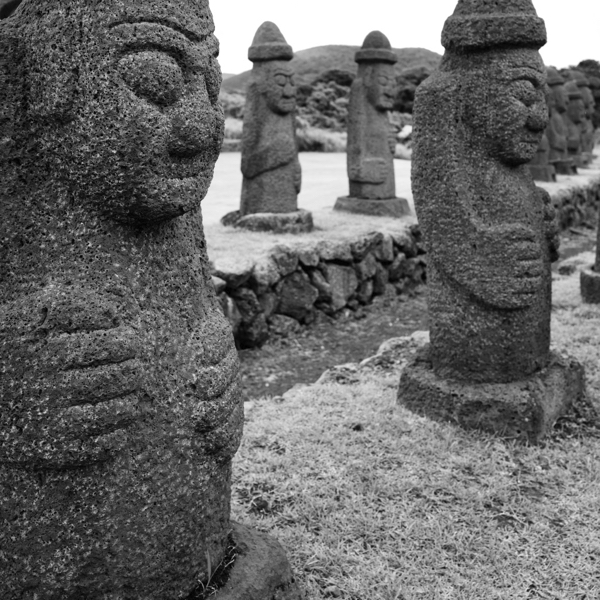
In the west of the island you will find Sanbang-san, a mountain along the coast. Up in the mountain is a rock with a Buddha statue. This statue can be reached with up to 400 steps. From the cave you have a beautiful view over the coast and the lower temple. On the coast is a replica of the Sperwer.
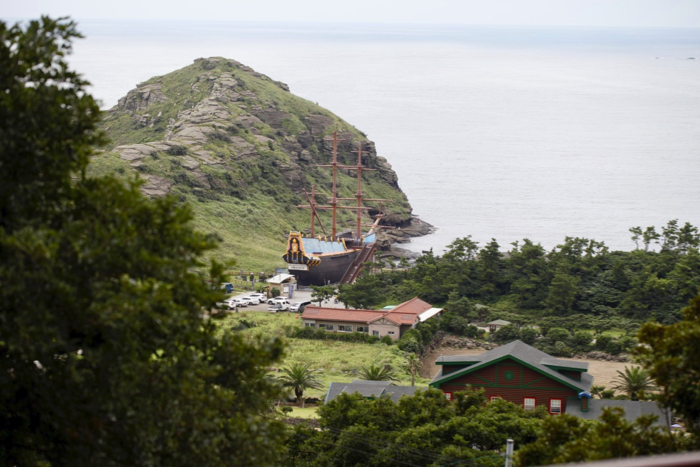
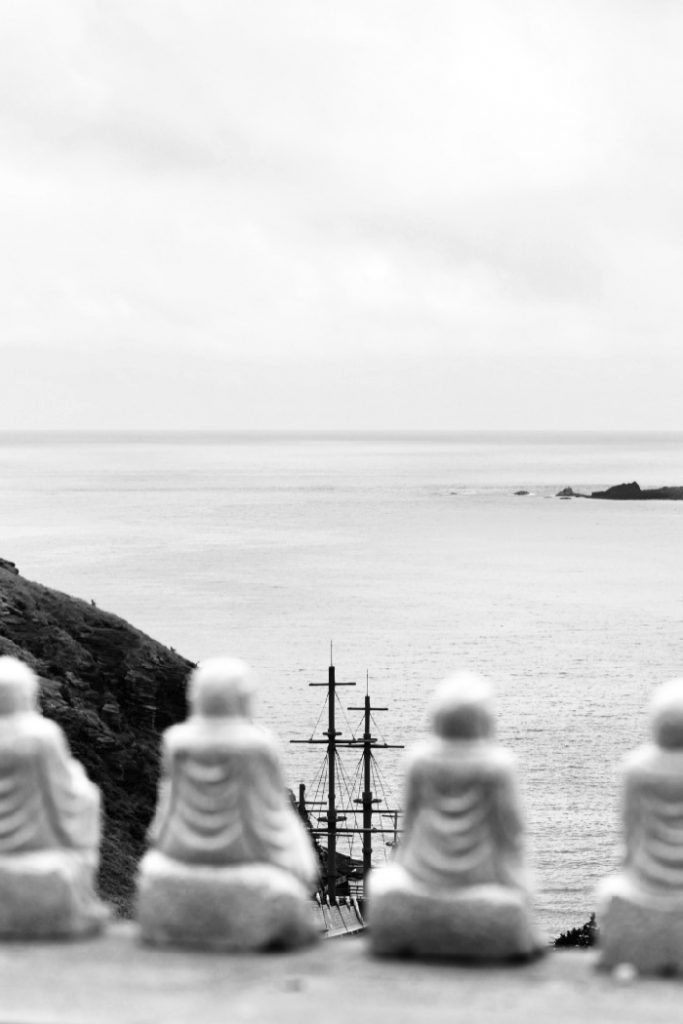
With this ship, the Dutchman Hendrick Hamel led a shipwreck in 1653 together with a number of crew members. Hendrick Hamel was born and died in Gorinchem in The Netherlands. He was imprisoned in South Korea for 13 years before escaping to Japan with 5 others. From there he traveled to Batavia (Jakarta) and back to the Netherlands. He has written a book about it and there is also a museum about him in Gorinchem. You can look into the Sperwer. There is an exhibition about the imprisonment of Hamel.
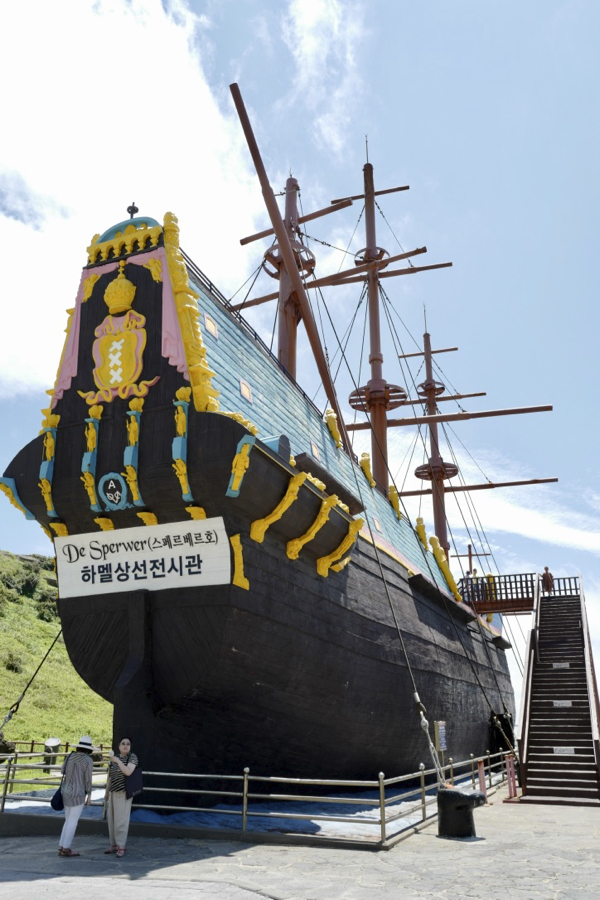
The O’Sulloc Tea museum is also worth a look. You can look here at the tea plantations and of course taste and buy the tea. The tea was a bit pricey. It is grown on volcanic soil, but it costs € 7.50 for 50 grams. In the café you can buy everything made from the powder of the tea, such as green ice cream, green cakes, green smoothies, etc.
You can also visit the Hendrik Hamel Museum in Gorinchem in the Netherlands http://www.hendrickhamelmuseum.nl.
Because we live near Gorinchem, we visited the museum shortley after our trip.. It is strange that we were not aware of this well-known person from the VOC era, who came from our region. The volunteers of this museum are very involved and passionate and we have embraced this museum in our arms. There are now a number of our photos that we have donated.
Day 14 en 15: Busan
From Jeju you can fly back to the mainland to the city of Busan. Busan is the 2nd largest city in South Korea with a population of 4.6 million. Busan is a big city that has no major attractions, but it does have a nice vibe and a modern look.
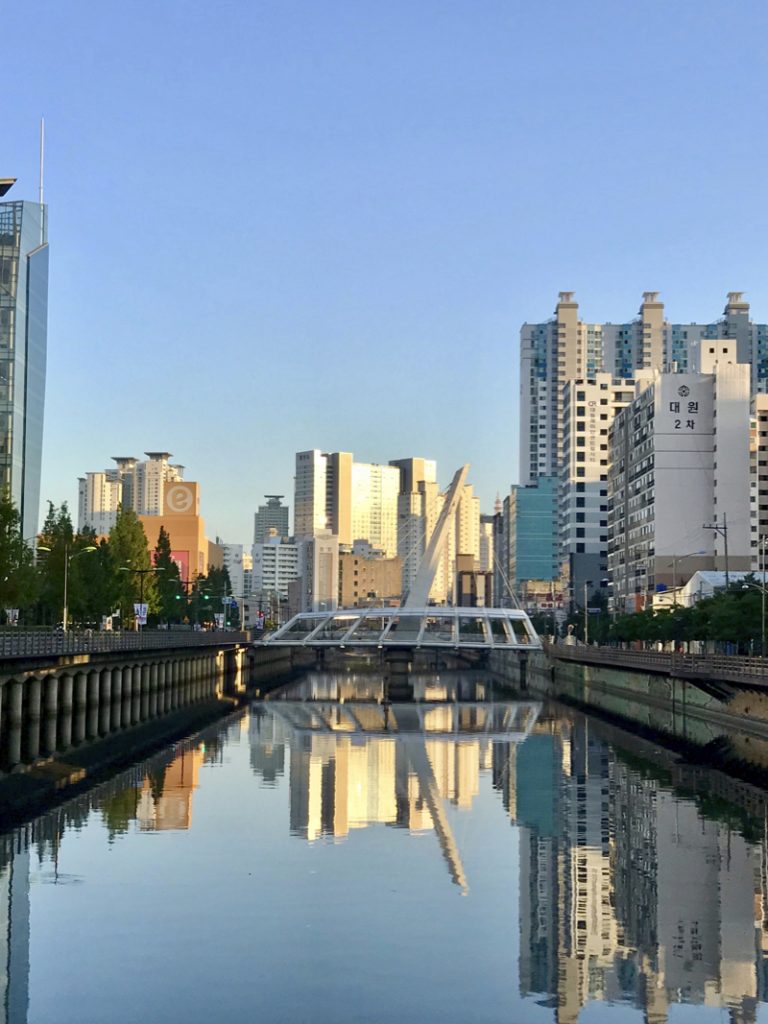
You can take a city tour bus pass. With this you can see the whole city and get off where you want. There are several routes. We took the red route. This route goes over a high and large bridge over the Sea of Japan
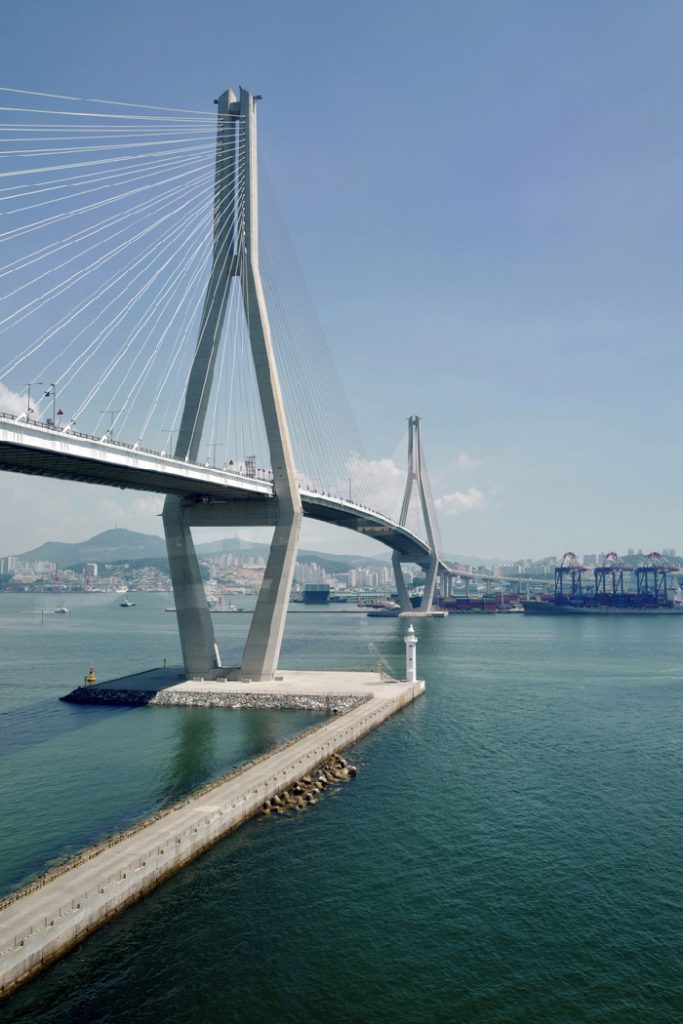
along Haeundae beach and the Jaldachi fish market. There are hundreds of stalls at the fish market. You can choose a fish, crab or shellfish there and have it prepared on the 2nd floor.
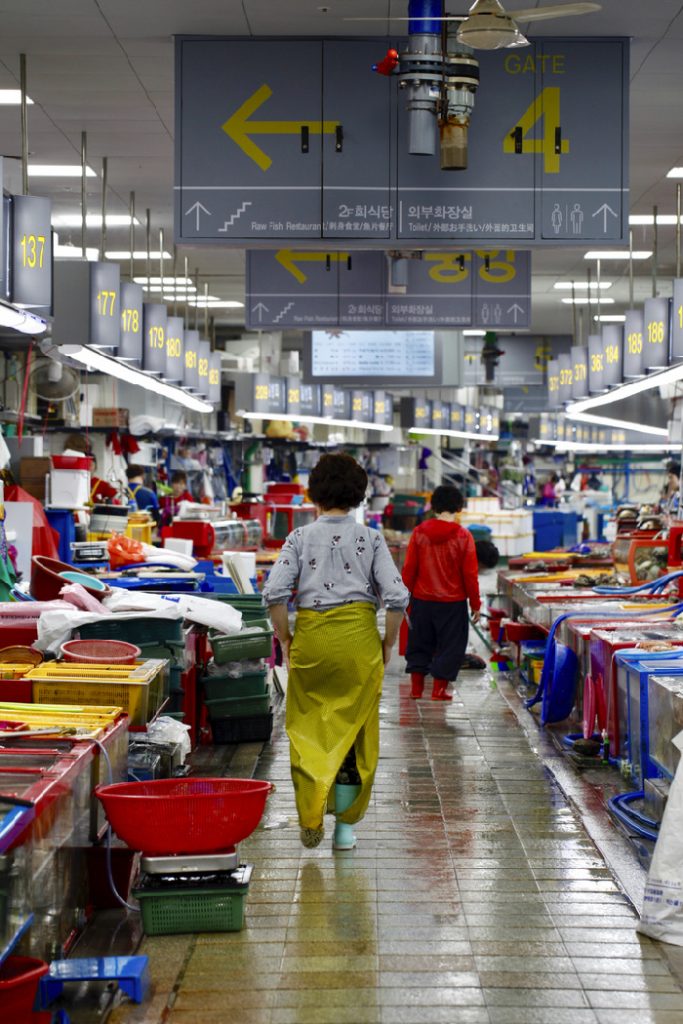
Day 16 en 17: Gyeongju
With an intercity bus you drive to Gyeongju. Gyeongju was the capital of the Shilla empire a thousand years ago (57-935 BC). The city then had a million inhabitants. Today there are about 300,000. The burial mounds that you see in the city are the 23 tombs of kings and queens.
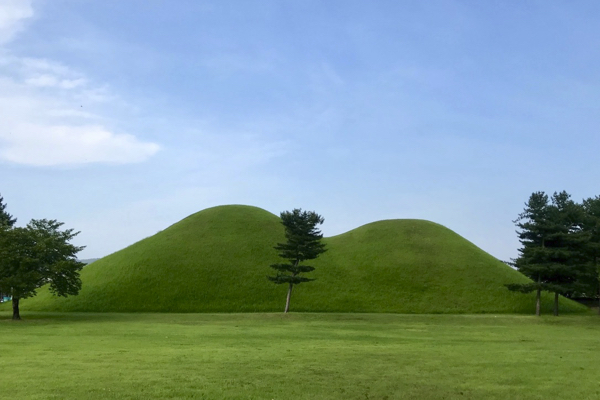
Just like the pyramids, valuable gifts were found in those tombs. These hills are located in a beautifully landscaped park (Tumuli park) where also a quiet music plays through the speakers. It’s nice to wander through this park. You can walk through this park to another park. There you will find the Gyochon traditional village and the Woljeonggyo bridge. This beautiful bridge is covered because it served for the kings to go to the southern part of the palace.

Further in the park (in summer) there is a field with a lot of flowers, where many Koreans take selfies. There you also have a nice view of the Cheomseongdea Observatory. An observatory. At sunset you can enjoy a beautiful pink sky with the burial mounds and the mountains in the background. You can walk back to the center via the food street.

From Gyeongju you can take bus 10 to the Bulguksa temple, which is located about 16 km outside Gyeongju. This Buddhist temple is the most famous temple of Gyeongju and is located at the foot of a mountain.

At the top of the mountain is the Seokguram Cave with a beautiful stone Buddha. Unfortunately, this Buddha is behind glass and you are not allowed to take photos of it. You can reach this cave with a taxi or with a nice walk of 2.2 km.

Day 18: Andong
In Adong you will find the photogenic Wolyeonggyo bridge. This is the longest wooden walking bridge in South Korea of 360 meters long. At sunset you can enjoy the beautiful lighting. Across the road are wooden walkways along the river.

From Andong you can take a 50-minute bus to the Hahoe Folk village. This traditional village is on the Unesco World Heritage List. If you have bought a ticket, a shuttle bus will drive you to the village. You walk on dirt roads past traditional houses. Most houses have thatched roofs and vegetables are grown in the gardens, such as rice and peppers. You can also cross the river and climb the cliff for a nice view. Korean tourists drive around in electric powered golf carts. With the shuttle bus you come back to the entrance and the mask museum. Andong is known for its mask festivals, which take place in September / October.
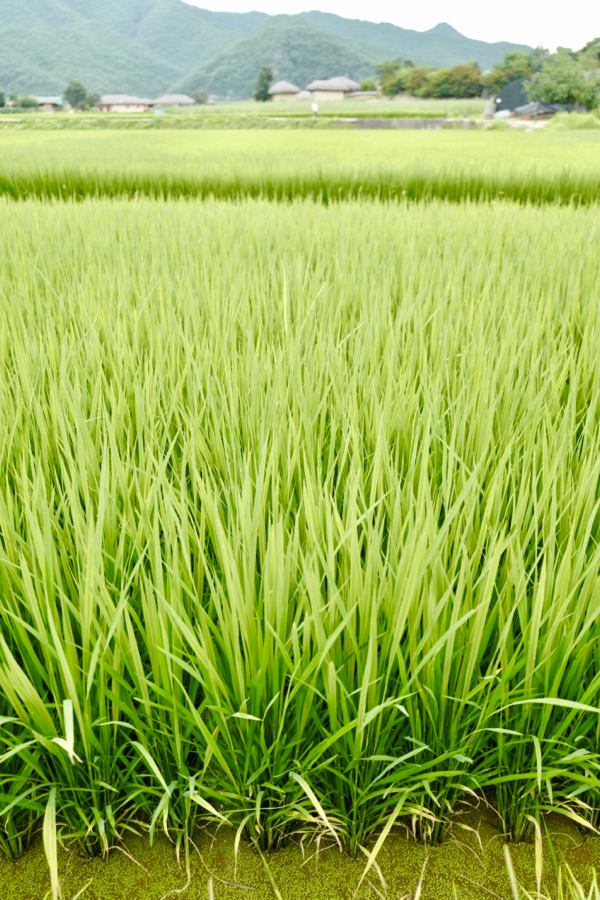
Day 19: Wonju
From Andong to Wonju you can take the train that takes 2.5 hours over 112 km. There are a few types of trains in Korea. The KTX is the high-speed train, similar to the Japanese Shinkansen. It only runs between the major cities. The other trains take less time, but are still quite luxurious and have reserved wide seats. Public transport is quite cheap when you consider that Korea is a prosperous country. We paid € 6.75 pp for the 112 km.

It’s nice to visit the Mount Sogeum swinging bridge near Wonju. This is a nice walking bridge over a gorge. The buses go once an hour, but you can also take a taxi. The taxi ride takes 20 minutes (15 km) and costs € 14 one way. After a short walk on a straight, you have to climb 578 steps. It is nicely laid out again. At the bottom of the stairs you have a device with which you can spray insect-repellent stuff on your body.

Once at the top you have several viewpoints and eventually you reach the 200 meter long bridge .. At the end of the bridge you can return via a high-trees path and you have a beautiful view of the bridge. An entrance ticket costs 3000 KRW (€ 2.21). You will receive a bracelet and a 2000 KRW voucher for this. You can redeem this voucher down at the shops.
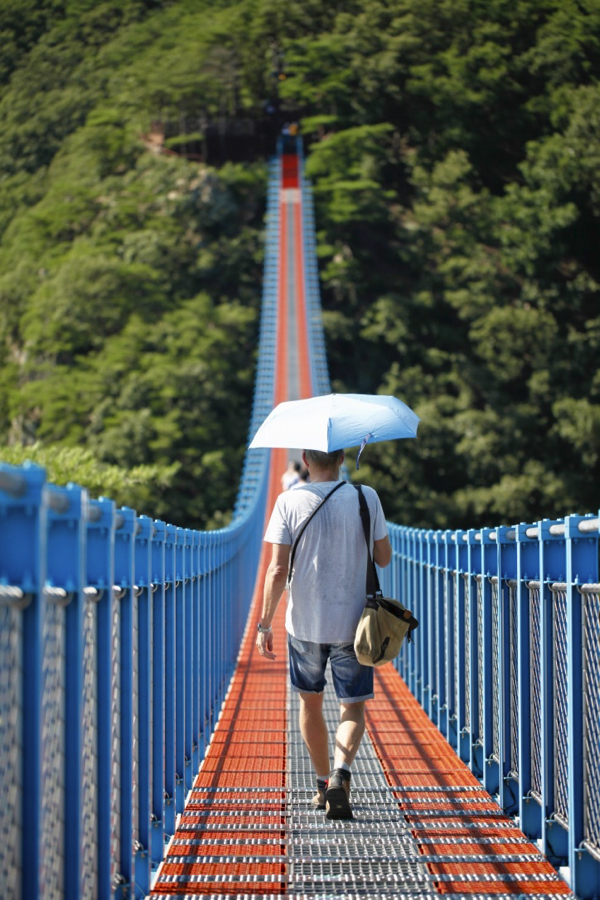

Day 20 t/m 24: Seoul
From Wonju you can take a KTX high-speed train back to Seoul.
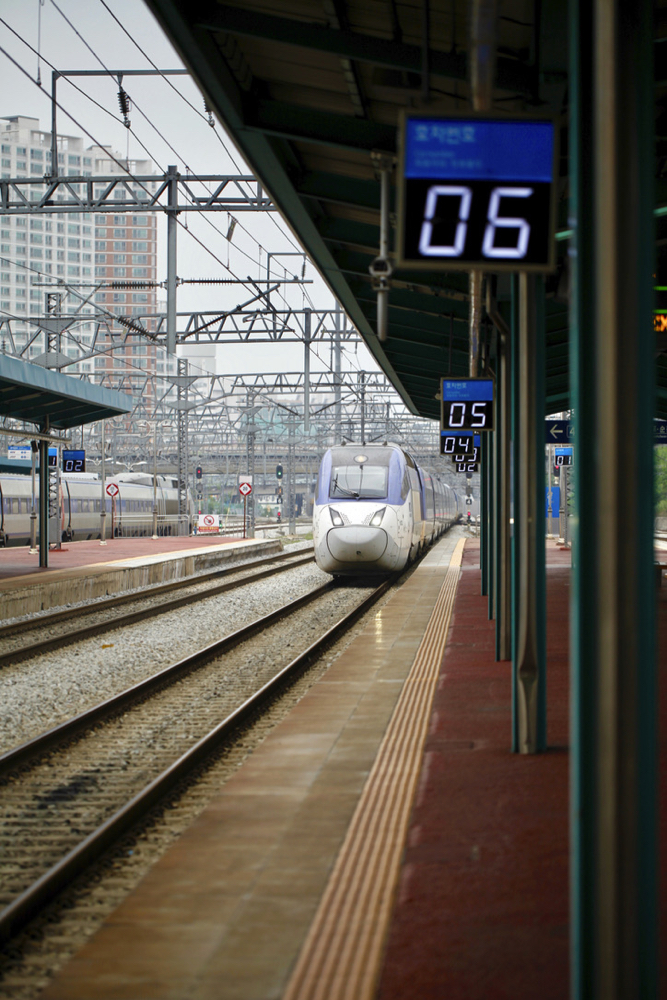
We stayed the 2nd time in hotel DH Naissance. This one is fairly downtown and has high ratings. The staff is very helpful. Just don’t take the cheapest room. These are quite small. Everywhere there are glowing notes about the hotel. Similarly, England’s short track team stayed here during the 2018 Olympic Games. You also get a free slice of pizza in the restaurant as a welcome.
The Dongdaemun design plaza, also called DDP, is an important monument for urban development in Seoul. It is a striking neo-futuristic design characterized by long curved shapes. It has a walkable park on the roofs, exhibition areas and restored parts of a former fortress.
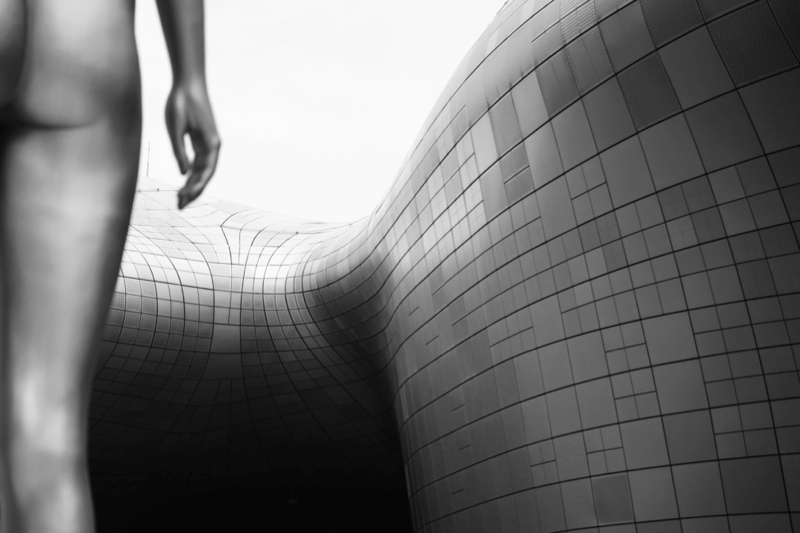
The city wall, which is still partly intact, is nearby. This wall starts at the Heunginjimun Gate and at Seoul city wall museum. If you want to walk the entire wall, it will take you about 10 hours, but you can also walk a smaller distance. This wall connects 4 mountains around Seoul. From the wall you have a nice view over part of Seoul. At sunset you can enjoy the lighting that comes on.
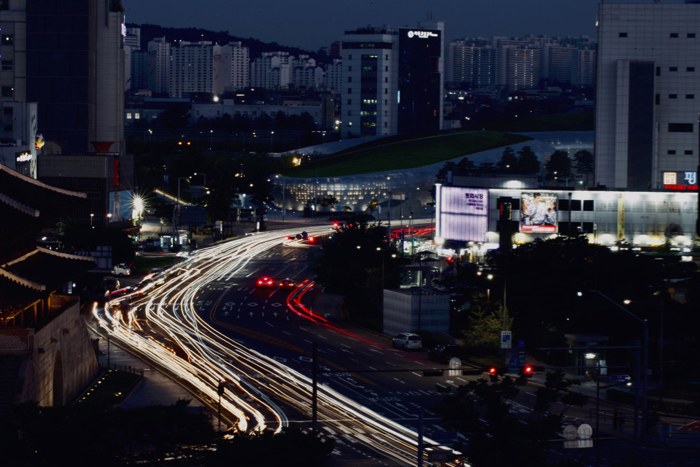
The Gwanjan market is also fun to visit, especially if you are looking for some souvenirs to take back home. We wanted to bring some Korean cooking stuff, but we hardly found it. On a previous trip in Japan we found In Tokyo a street with all kinds of shops with pots and pans. Since we like to cook Asian, we always like this kind of shops. It is also fun to walk along the water of the Cheong-gye-cheon. This stream flows for a few kilometers through the city center and along it are hiking trails and rocks, waterfalls, etc. You can also sit with your feet in the water in the shade under a bridge. More Koreans do that.
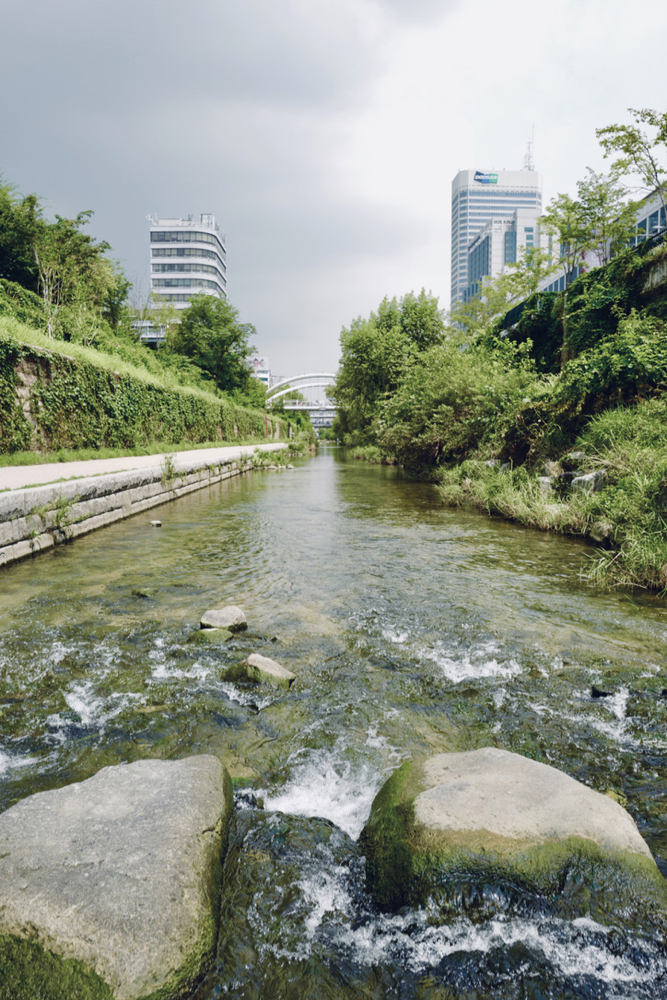
Korean cuisine is one of the best Asian cuisines. It is therefore fun to do a cooking course. You will be introduced to the ingredients unknown to us. You can find several on the internet. We chose Janet’s cooking studio because she can also take into account certain diets such as gluten-free, vegetarian or other food allergies. http://www.janetscookingstudio.com Janet is Korean, but lived in the United States from the age of 18, where she was trained to be a chef. She went back to South Korea and Seoul and gives a food tour in addition to cooking courses.

She first takes you to the local market and shows you different ingredients, vegetables and dishes. She prepared 4 dishes for us, which we made together and then ate:
- Jjimdock (stewed chicken in sauce)
- Mushroom Japachae (noodle dish)
- Sea food pa-Jeon (spring onion pancake with seafood)
- Bulgogi salade; thin strips of beef, which you place on a perilla leaf (minty leaf, also called shiso) or a lettuce leaf with rice and ssamjang (hot sauce).

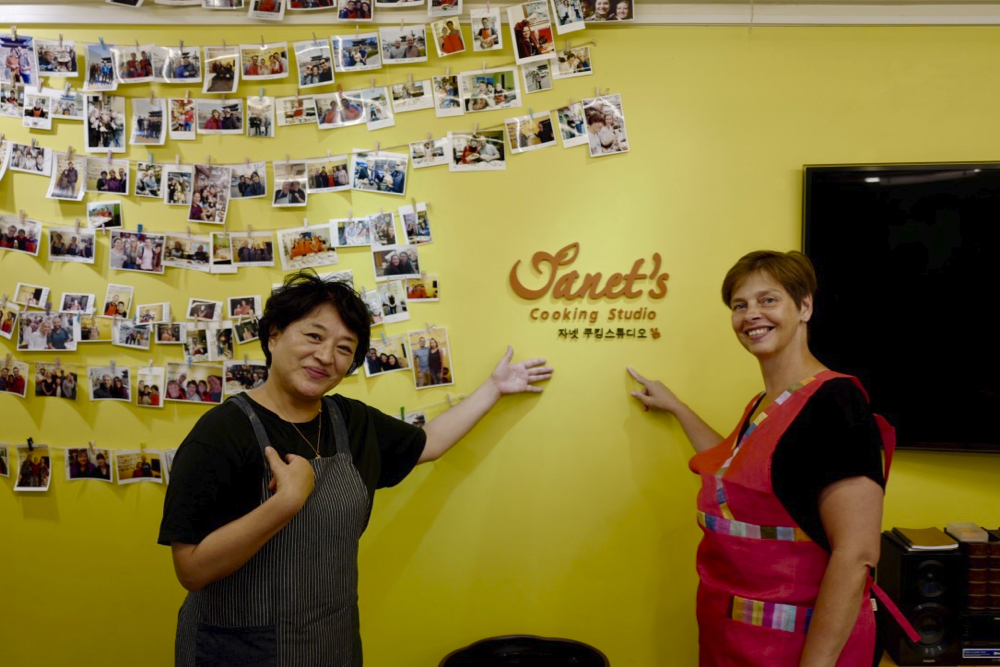
The Gangnam district south of the Han River is modern and affluent. Here you will also find quite a few plastic surgery clinics, because many Korean women in this district find it normal to have something done. This is also where the K-pop and the song “Gangnam-style come from. All kinds of Gagnamdols line the K-star road. Dolls that symbolize a well-known K-star pop group. Along this road you will also find the luxury brand shops such as Chanel, Louis Vuitton, Cartier etc. These shops are housed in beautifully designed buildings.
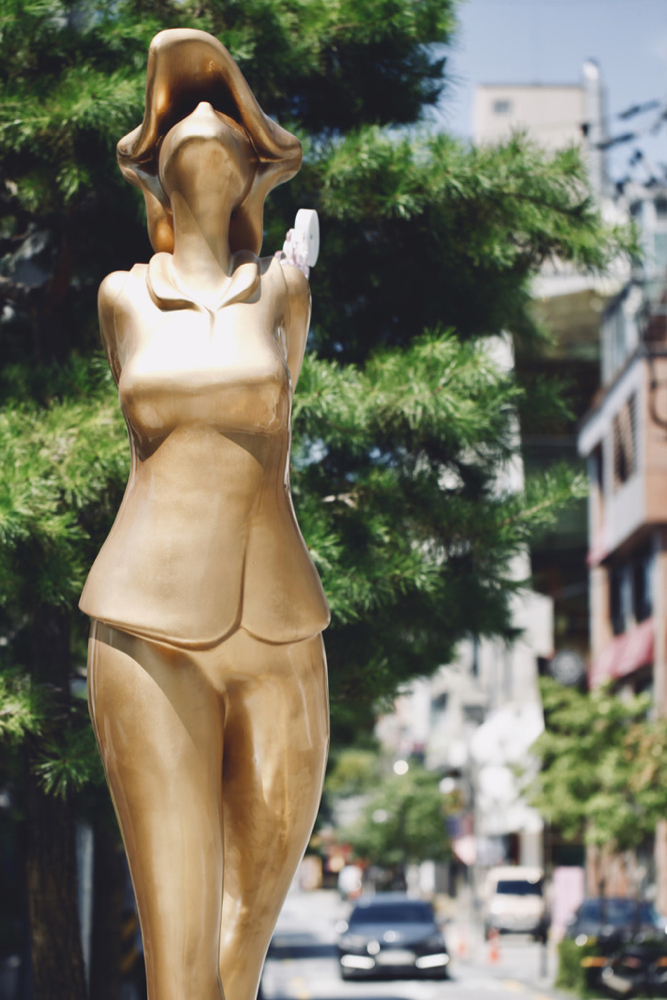

The Bongeunsa temple is a beautiful temple in the middle of the skyscrapers. It is beautiful, peaceful and serene. You can hear the monks praying. The temple is located on a hill in a beautiful garden. The Coax is opposite the temple. Coax is an aquarium and one of the largest underground shopping centers in South Korea.
It also has several museums such as the SM museum. SM is South Korea’s largest entertainment company. It has spawned countless K pop stars. The entire store hangs and is full of merchandise from mostly hip boy groups, who sing sultry, have fun styling and make beautiful dances. We spoke to a girl of about 18 years old. We asked her out of interest about K-pop. She was a fan of the group “superjunior” and had bought all kinds of things for her and some friends.
There is also a special bookshop in the Coax. This is very high, with a glass roof and books up to the ceiling. Very futuristic.
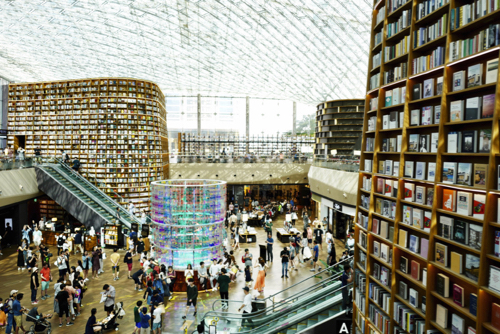
In the Samneung park, you will find 3 tombs of kings from the Joseon dynasty.
At the Gangnam metro stop there is a statue in honor of the song “Gangnam style”. According to the internet, the song would also be played in that place and people would do the dance, but that was not the case. The Coex building also has a statue in honor of the song.
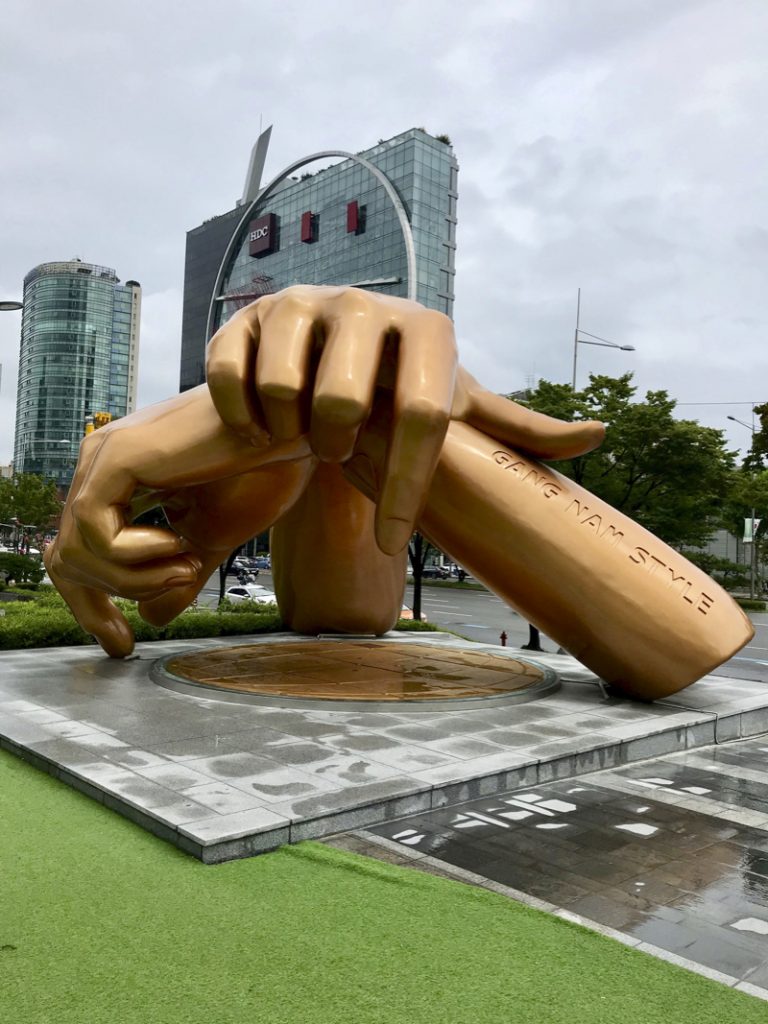
The Olympic Park was built for the Asian Games in 1986 and the Olympic Games in 1988. The World Peace Gate is a beautiful gate built to celebrate the spirit of the Korean Olympic Games. An eternal flame burns under the gate. This is a sign of peace and harmony for everyone in the world.
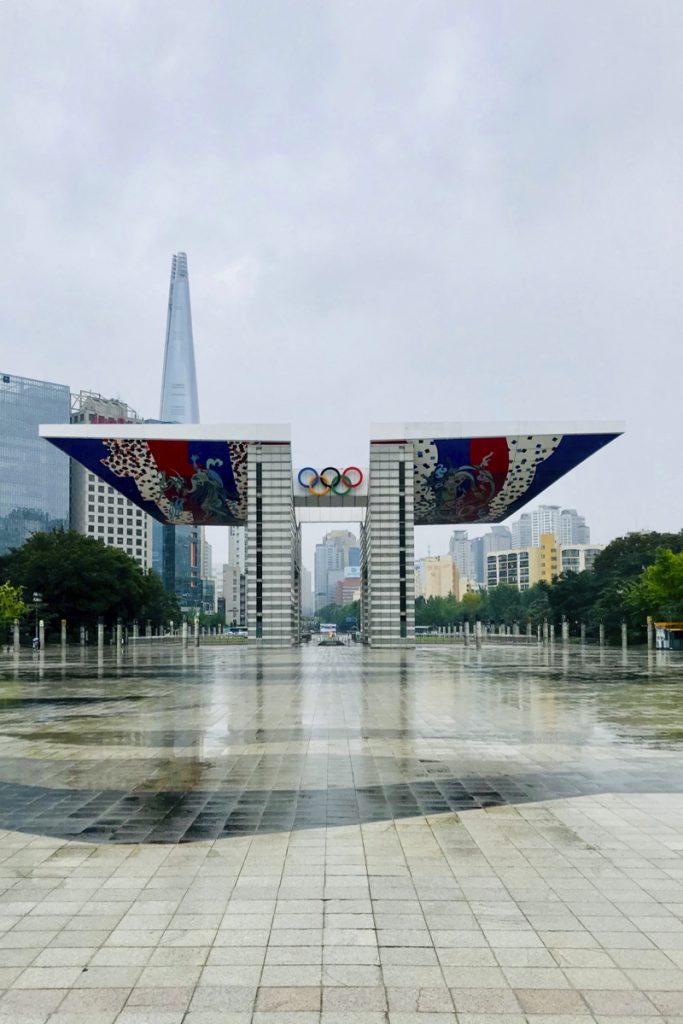
You can see the Lotte World Tower from the Olympic park. With 555 meters and 123 floors, this tower is the 4th tallest tower in the world and the highest point in South Korea. The elevator goes up 10 meters per second, where you get off on the 117 floor. In the elevator you can not look outside, but there are beautiful images on the walls and ceiling. You can then take an escalator to floors 118 to 123. On the 118th floor is a glass floor. Downstairs you can see the Lotte World amusement park, the Han River and you have a nice view of Seoul.


Summarizing:
We found South Korea a very nice country to travel around. Because South Korea is only 2.5x the Netherlands, the distances are not great. Koreans are very friendly and polite. South Korea is in 11th place in terms of the national product and the Netherlands is 18th. South Korea was a poor country after the Korean War, but has recovered quite well. It is therefore not as cheap to travel around as in other Asian countries, but public transport and hotels are cheaper than in the Netherlands. It is a clean and efficient country. There is a wide variety of sights; there are beautiful temples and other antiquities, beautiful beaches on Jeju, nature, modern architecture and of course delicious food. Tips on gluten-free food in South Korea: https://captureplaces.com/glutenvrij-zuid-korea/
